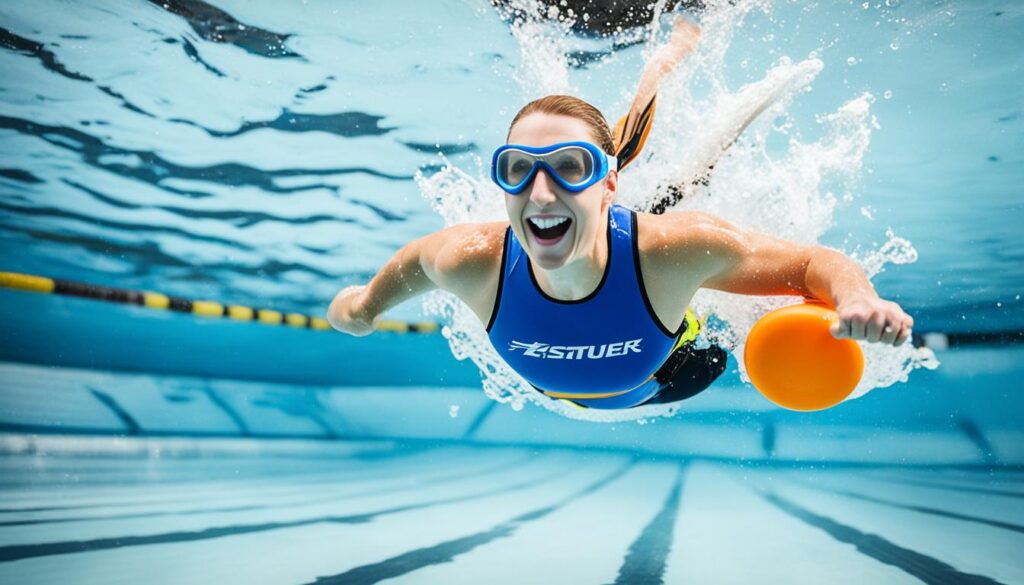
After an injury, you might wonder if fun times are over. Thankfully, you can still enjoy what you love with a few changes. But, what changes can you make after an injury?
This article will share tips and adjustments for your favorite activities. We’ll talk about common sports injuries and how to adapt if you hurt your arm or wrist. You’ll learn how to keep doing what you love safely.
If you love running, dancing, working out, or just staying active, this piece is for you. Learn how to safely modify your activities after an injury. Find out how to keep enjoying your hobbies while healing.
Key Takeaways:
- Modifying activities after an injury is essential for safe and enjoyable participation.
- Understanding common sports injuries can help you make informed decisions about your recovery activities.
- Preventing sports injuries is crucial through proper training, wearing appropriate gear, and maintaining overall health.
- Specific modifications can be made for arm and wrist injuries, enabling you to stay active and engaged.
- Choosing the right cast is vital to ensure comfort and flexibility during the healing process.
Understanding Common Sports Injuries
Sports injuries can really affect your ability to do what you love. Knowing about the different types helps with healing. Here are the most common types you might encounter:
Sprains
Sprains harm the ligaments holding bones together. They happen when joints move wrongly or stretch too much. Ankles and wrists are often sprained.
Strains
Strains injure muscles or tendons that link muscles to bones. Overstretching or overuse can lead to strains. This results in pain and trouble moving.
Joint Injuries
Joints like knees and shoulders can get dislocated or subluxated. Dislocations and subluxations shift the joint, causing pain and dysfunction.
Muscle Injuries
Muscle injuries happen from sudden moves, too much use, or not warming up right. They bring pain and make it hard to move.
Dislocations
Dislocations occur when joint bones are forced out of place. This needs quick medical help to fix and avoid more harm.
Fractures
Fractures are bone cracks or breaks due to strong forces or stress. They range from slight to severe and sometimes need surgery.
Achilles Tendon Injuries
The Achilles tendon can strain, swell, or tear from too much stress or quick moves. Such injuries can seriously affect walking or exercise.
Shin Bone Pain
Shin splints cause pain along the shin bone due to overuse or bad shoes. They bring discomfort and limit movement.
Healing from a sports injury means doing the right activities. These vary by injury type and severity. Always seek advice from a pro to make a recovery plan.
Prevention of Sports Injuries
To prevent sports injuries, it’s important to take precautions. Add exercise changes and injury-safe activities to your routine. Doing so lowers injury risk and ensures a safe and rewarding fitness journey.
Proper Training Practices
Proper training is essential in avoiding injuries. Increase your workout intensity and time slowly. This lets your body adjust. Listen to yourself and don’t push too hard. Going beyond your limits can cause injuries.
Wearing Appropriate Sporting Gear
Using the right sporting gear is crucial. Wear protective equipment like helmets, knee pads, or wrist braces based on the sport. This gear provides support and lowers injury risks. Ensure your gear fits well and is in top condition.
Maintaining Good Health Condition
Good health is key to preventing injuries. Exercise regularly, eat a balanced diet, sleep enough, and stay hydrated. These practices boost your body’s resilience. Focus on your well-being by choosing injury healing activities.
Warming Up and Stretching
Warming up and stretching before any activity is important. It prepares your body, making muscles and joints more flexible. Use dynamic stretches that resemble your sport’s movements. This activates relevant muscle groups and improves performance.
Learning Correct Techniques
Using correct techniques is vital for avoiding injuries. Proper form lowers body stress and injury risks. Get help from a qualified coach for safe and effective exercises.
Fitness Plan Incorporating Cardiovascular Exercise, Strength Training, and Flexibility
A balanced fitness plan can lower injury chances. Include cardio for heart health and endurance. Strength training builds muscle and prevents injuries. Flexibility exercises improve joint motion, reducing strain risks.
Consultation with a Medical Professional
Consult a doctor before starting any fitness program. They offer personalized advice based on your needs and history. A doctor can suggest safe exercises. By choosing safe exercise changes, you can enjoy fitness while avoiding injuries.
Embrace these changes and recovery activities for a safe fitness path. Remember, preventing injuries is key to a lasting and enjoyable activity routine.
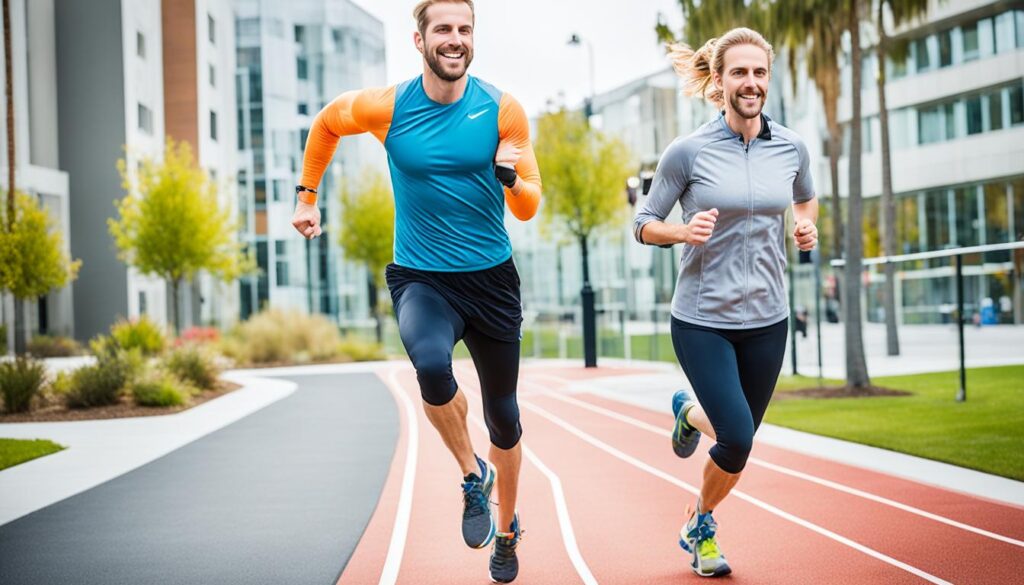
Modifications for Arm and Wrist Injuries
When dealing with arm and wrist injuries, it’s crucial to adjust how we do things. This ensures we can keep being active safely. Making the right changes can help you stay active without hurting your injury further.
1. Cardiovascular exercises: Pick exercises that don’t need you to use your arms, like jogging or the elliptical. These keep you fit while not harming the injured part.
2. Leg strength training exercises: Do exercises that work out your legs more, like squats and lunges. This builds leg strength but keeps your arms and wrists safe.
3. Core strengthening workouts: Work on your core with planks or bridges. Strong core muscles make you more stable and fit.
4. Yoga or stretching: Try yoga or gentle stretches to become more flexible and relaxed. Just make sure not to do any that hurt your arm or wrist.
5. Dancing: Dance classes are great for focusing on your legs and having fun. Choose dances that don’t need much arm movement.
6. Hiking: Hiking lets you enjoy nature without hard impact on your arms. Pick easier trails that are gentle on your body.
7. Swimming: Swimming is gentle and can be adapted for arm injuries. Use kickboards or leg strokes to keep off your arms.
Always listen to your body and stop if you feel pain. Check with a doctor or therapist for advice tailored to your injury.
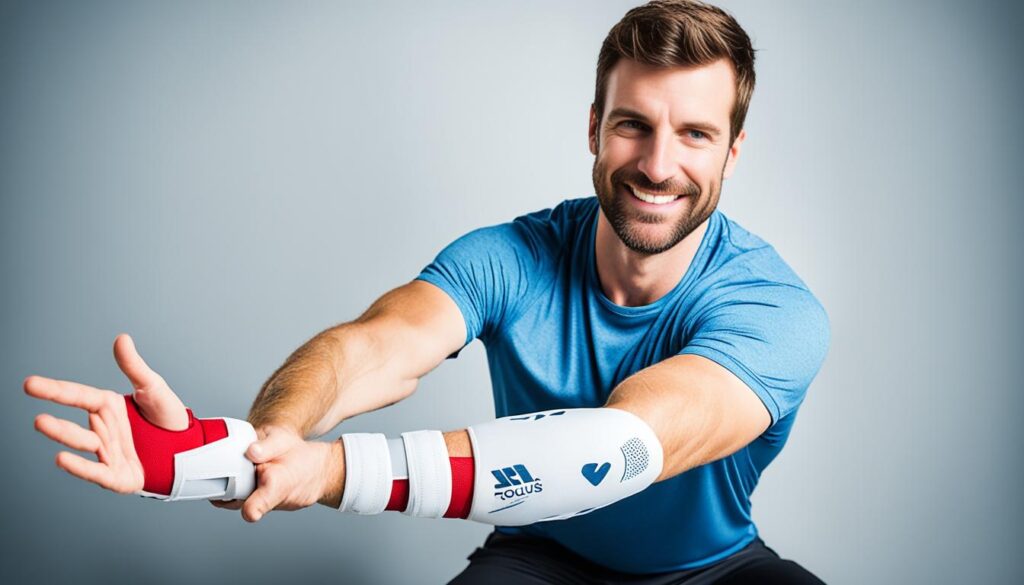
| Activity | Description |
|---|---|
| Cardiovascular exercises | Activities that don’t require arm movement, such as running or using an elliptical machine |
| Leg strength training exercises | Focusing on lower body exercises like squats, lunges, and leg presses |
| Core strengthening workouts | Exercises that target the core muscles, like planks, bridges, and pelvic tilts |
| Yoga or stretching | Participating in yoga sessions or performing gentle stretching exercises |
| Dancing | Engaging in dance routines that focus on footwork and lower body movements |
| Hiking | Exploring nature and enjoying the outdoors by going on hikes |
| Swimming | Engaging in swimming activities with a focus on leg movements |
Tips for Exercising with a Broken Arm
Working out with a broken arm might seem hard. Yet, there are many safe activities you can still enjoy. Even with a cast, you can modify exercises to fit your situation. These tips will keep you active and engaged while you heal.
Cardiovascular Training without Arm Involvement
Cardio is key for staying fit and helps with blood flow. You can’t use your arm much, but there are other ways to do cardio. Try these:
- Stationary biking: This is gentle and doesn’t strain your arm. Change the resistance to make it harder if you want.
- Routine walking or jogging: Walk around your area or go to a park. Keep it easy and don’t stress your arm.
- Using an elliptical machine with no arm involvement: An elliptical gives a good workout. Just use your legs and keep your arm still.
Leg Strength Training
Your arm needs to rest, but you can still tone your legs. Working on your legs keeps you stable and fit. Consider these leg exercises:
- Bodyweight squats: Stand apart and sit back, then stand up. Do 10-15 reps for a few sets.
- Lunges: Step and bend your knees, then switch legs. Do 10-15 reps on each leg for a few sets.
- Calf raises: Lift your heels up and down. Do 10-15 reps for a few sets.
Core Strengthening Exercises
A strong core helps you stay balanced. You can do these exercises without using your arm. They help you stay fit as you heal. Try these:
- Planks: From a push-up, rest on your elbows. Stay straight and hold. Repeat for a few sets.
- Bridge exercises: Lie down, lift your hips, and hold. Lower and repeat for a few sets.
- Russian twists: Sit and twist your body holding a weight. Do this for a few sets.
Yoga or Stretching
Yoga and stretching can make you more flexible. They also help with healing. Some poses need changing. Ask a yoga teacher or therapist for safe options.
Dancing and Hiking
A broken arm doesn’t mean you can’t have fun. Dance at home or hike. Be careful to not hurt your arm more. Enjoy but stay safe.
These tips and a positive outlook let you stay active. Always check with your doctor before trying new exercises.
Swimming with a Broken Arm
Swimming is a great workout for those with a broken arm. The water gives extra support and cuts down injury risks. Using a kick-board helps keep you stable and lets you work on your legs. It’s key to tune into your body. Steer clear of quick moves or harsh strokes during your swim.
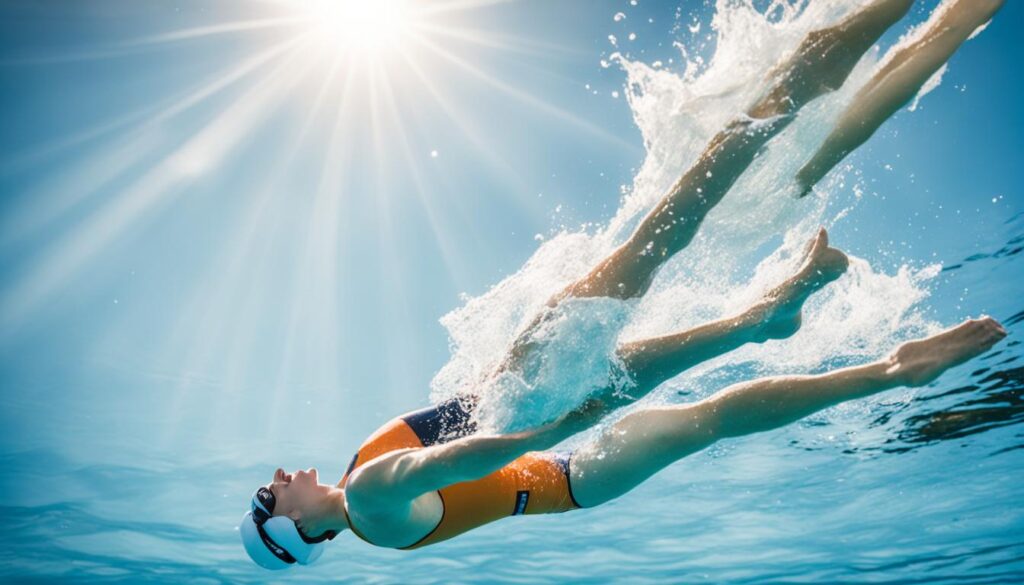
The Importance of Choosing the Right Cast
Choosing the right cast is key to comfort and flexibility during healing. Traditional casts can restrict activities and cause discomfort. Consider alternatives like the Cast21 cast. It’s made from a lightweight resin that sets quickly. It’s breathable, waterproof, and suits an active lifestyle. These casts protect well without being bulky and show off your style.
The Cast21 cast is notable for its design and function as an arm cast alternative. It’s made from a durable, lightweight material. This makes it a comfy and practical choice for those with arm injuries who want an active recovery.
Cast21 cast is ideal for those who don’t want to give up their daily activities. It allows you to keep enjoying sports, swimming, showering, and outdoor adventures. You won’t have to worry about your cast getting damaged or limiting your movement.
The Cast21 cast’s waterproof feature is a big plus. Unlike traditional casts that must stay dry, this one lets you swim or shower without worry. This helps keep you clean and dry, which is better for healing.
Besides being waterproof, the Cast21 cast also offers great ventilation. Its design stops sweat from building up, which lowers the risk of skin issues or infections. This means more comfort, even when you wear it for a long time.
Also, the Cast21 cast is customizable, letting you make your recovery period unique. You can pick different colors and patterns. This way, your cast mirrors your personality, making long healing times more fun.
If you’re looking for the right arm cast, consider the Cast21 cast. Its features – light, waterproof, and customizable – make it a great choice against traditional casts. With Cast21, you can stay active and support your healing confidently.
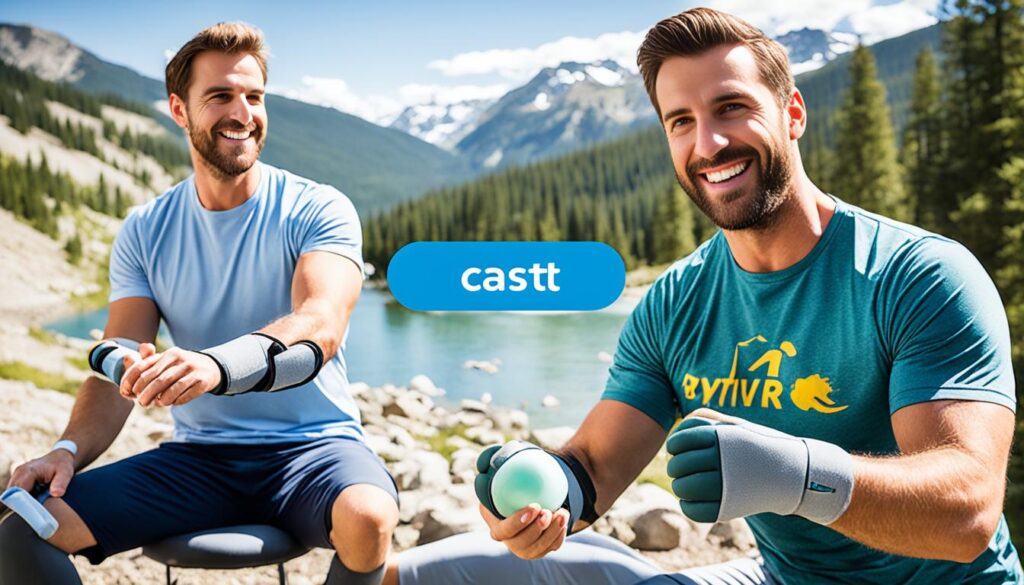
Staying Active with a Cast
Having an injury doesn’t mean you have to stop being active. You can still do your favorite things with the right cast. Casts like Cast21 are made for comfort and flexibility. This lets you be active while you heal.
Working out with a cast might need some changes, but you can keep fit. You can still exercise, hike, dance, or swim. Let’s look at ways to exercise with a cast:
1. Cardiovascular Training
You can do cardio exercises without using your hurt limb. This keeps your heart rate up and your endurance strong. Running or using an elliptical can be changed to protect your cast. But you’ll still get a good workout.
2. Strength Training
Some strength exercises may need changes, but you can work on strong parts of your body. For legs, try squats and lunges. For your core, planks and bridges are good. They won’t hurt your casted limb.
3. Flexibility Workouts
Yoga and stretching can make you more flexible and relaxed. Just be careful with your hurt limb. Changing some poses can help you avoid pain. Gentle stretching keeps your muscles from getting stiff and helps you feel better.
4. Dancing and Low-Impact Activities
You can still dance or do low-impact activities with a cast. Pick dances that don’t need arm moves, like ballet or hip-hop. Activities like hiking are good too. They focus on moving your legs and balancing.
5. Swimming with a Cast

Swimming is great for staying active with a cast. The water’s buoyancy means less impact on your casted limb. Using a kickboard for leg work is a good cardio workout. Just make sure you don’t do moves that could hurt your recovery.
Making changes to your activities lets you stay active with a cast. Always check with your doctor to make sure your choices are safe for your injury and recovery.
Considerations for Activity Modifications
When recovering from an injury, modifying your favorite activities is key. This ensures a safe and enjoyable time. Here are some factors to keep in mind:
Choosing Injury-Friendly Activities
Choose activities that don’t stress the injured part. Walking, swimming, or cycling are good. They help you stay fit without harming the injured area.
Proper Warm-Up and Stretching
Warm up your muscles before any activity. Also, do some stretching. This prepares your body and reduces injury risk.
Using Appropriate Equipment or Gear
Make sure you use the right equipment. You might need supportive shoes, protective padding, or special gear for your injury. The right gear helps avoid making the injury worse.
Seeking Guidance from a Healthcare Professional
“When in doubt, consult a healthcare professional. They’ll offer advice and suggest the best modifications. Their expertise ensures you’re cautious and doing activities that aid your recovery.”
Keep these factors in mind to modify your activities safely. Always pay attention to your body’s signals. Adjust your activities as your recovery progresses.
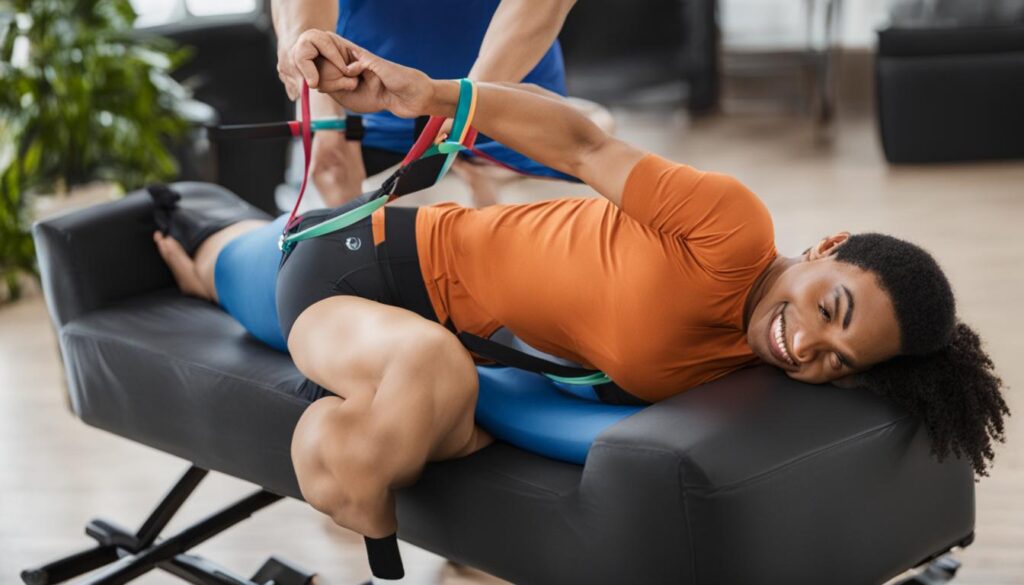
Activity Modification Checklist:
Here’s a checklist to modify your activities safely:
- Choose low-impact exercises that don’t stress the injured area.
- Warm up properly before any activity.
- Do stretching exercises to become more flexible.
- Use the right equipment for support and protection.
- Get advice from a healthcare professional tailored to your needs.
Consult a Medical Professional
After an injury, it’s important to talk to a medical expert. They know how to tailor advice based on your injury’s type and severity. This ensures the changes you make help you heal properly without causing more harm.
They’ll help find the right recovery activities for you. They can suggest specific exercises to speed up your healing. By following their plan, you can achieve your recovery goals safely.
They also explain how to safely alter activities after an injury. This includes teaching you ways to move that avoid putting extra stress on the injured spot. This advice helps prevent hurting the area again and supports your recovery.
Recovery varies from person to person. What helps one individual might not work for another. By seeking expert advice, you’re more likely to find safe, effective ways to adjust your activities.
Speaking with a healthcare professional is key for the best advice on changing activities post-injury. Their knowledge, personalized tips, and support are crucial for a smooth recovery journey.
The Benefits of Physical Activity During Recovery
Modified physical activities can aid your recovery in many ways. It’s key to observe your body’s signals and seek advice from a doctor. Staying active helps in improving your well-being and supports your healing.
Maintaining General Physical Fitness
Keeping up with physical fitness is crucial, even while recovering. Adding low-impact exercises or gentle stretches to your daily routine can keep your muscles strong and flexible. This helps in maintaining your heart health too.
Preventing Muscle Loss
Being active helps in avoiding muscle loss during recovery. Exercises focusing on unaffected muscles or using resistance bands are good. They assist in keeping your muscles toned and strong.
Improving Mental Well-being
Physical activity boosts your mental health. It can reduce stress and make you feel happier. Engaging in suitable activities during recovery has many emotional benefits. It makes you feel successful, increases your confidence, and reduces feelings of loneliness or frustration.
Promoting Circulation and Healing
Being physically active increases blood flow. This helps in healing by bringing more oxygen and nutrients to injuries. Gentle exercises can also help in lowering swelling and inflammation.
Smooth Transition Back to Regular Activities
Starting with modified activities helps your body adapt as you recover. This makes returning to usual activities easier. You’ll stay strong, flexible, and fit. This prepares you for a more active life after you’ve healed.
Recovery paths differ for everyone, so listening to your doctor is important. Start with easy activities, then slowly do more as you get better. By focusing on recovery and including suitable exercises in your day, you support your body’s healing while keeping fit and healthy.
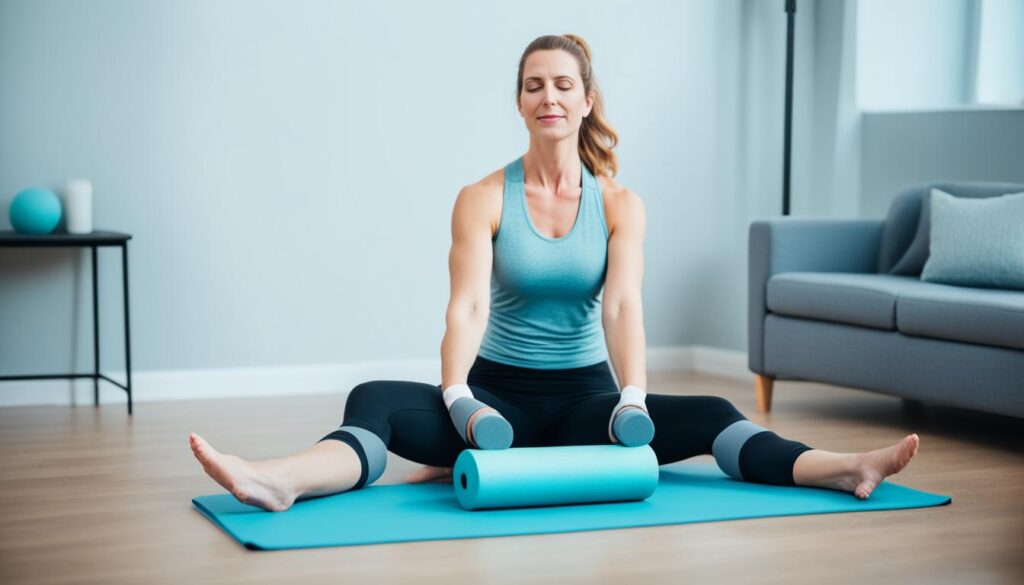
| Benefits of Physical Activity During Recovery |
|---|
| Maintains general physical fitness |
| Prevents muscle loss |
| Improves mental well-being |
| Promotes circulation and healing |
| Ensures a smooth transition back to regular activities |
The Future of Injury Recovery
Advancements in injury recovery are rapidly changing, bringing new hope to people. New casts, rehab methods, and treatments are being developed. The future seems bright for recovery options.
It’s vital to stay updated on these changes. By following the latest studies and talking to doctors, people can choose wisely for their recovery. Trying new rehab options can lead to better healing and a quicker recovery.
There’s a lot to explore, like Cast21 casts. These are light, let skin breathe, and keep water out. Plus, there are new rehab techniques for different injuries. These advancements offer personalized care. They make sure every recovery step is the best it can be.